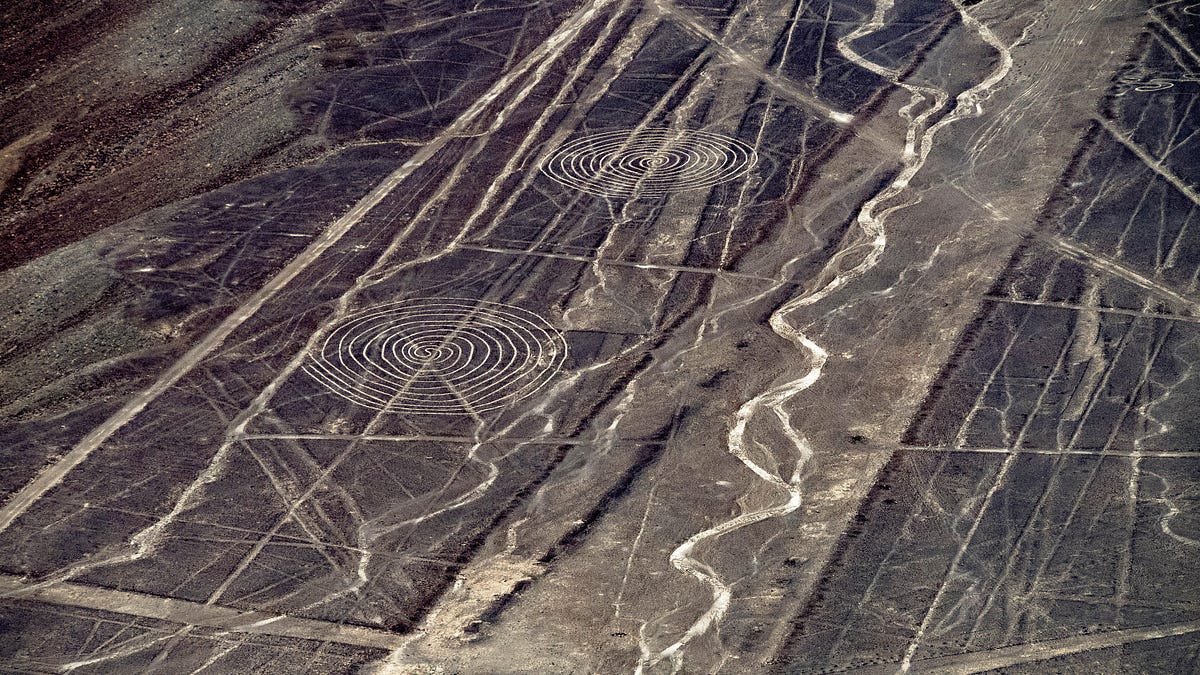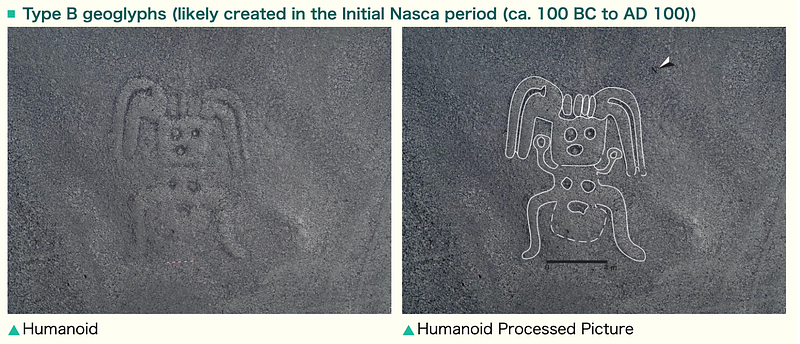
In Southern Peru, deep in the Nazca Desert, ancient etchings spread across the landscape. To an observer at ground level, they appear as lines cut into the desert surface. Most are straight, while others curve and change direction, seemingly at random. Viewed from foothills or in the air, however, the etchings are revealed as figurative symbols, or geoglyphs. From this vantage, the Nazca lines take the form of geometric and biometric shapes, depicting plants, animals, and anthropomorphic figures.
The meaning and purpose of the Nazca lines have remained a mystery to archaeologists since their modern discovery in the 01920s. Some theorize that the etchings mark solstice points. Others believe they are artistic offerings to deities in the sky.
Archaeologists estimate the Nazca created several thousand lines between 0200 BCE and 0600 CE, using a methodical process of extracting specific stones to expose the white sands beneath. Researchers have long believed that there are many more Nazca lines yet to be discovered, but traditional methods of identifying the lines are time-consuming and demanding. Additionally, many of the lines have been damaged from floods, and disrupted by roads and infrastructure expansion.

In recent years, a research team at Yamagata University has turned to an unconventional aid in its search: artificial intelligence. And it’s working better than anyone expected. On 15 November 02019, after decades of fieldwork and with extensive collaboration with IBM and their PAIRS Geoscope, the team announced that a total of 143 new designs had been uncovered.
The AI technology deploys deep-learning algorithms in order to synthesize vast and diverse data from LiDAR, drone and satellite images, to geospatial and geographical surveys. The result is high-fidelity 3-D maps of the surrounding search areas. Next, the AI is taught via a neural network to recognize the data patterns of known lines. The AI then searches for new ones over a stretch of 5 kilometers of terrain.

One of the more curious recent discoveries was the above futuristic-looking humanoid figure.
The image is processed to outline and highlight the etchings for vastly improved visibility. The figure joins a collection of more than 2,000 previously known Nazca Lines. Other symbols include a fish, hermit bird and two-headed snake. In addition, IBM made this detection technology open source so other ventures can gain from the system, for example, to identify crops and improve irrigation management across the globe. The team plans to continue its work using more capable AI systems, like laser mapping data and advanced aerial images.
The project, with angles of both investigation and preservation, aims to document and understand the Nazca Lines as a whole. Once the team have a better understanding of the distribution of the lines, they can accelerate research towards the best way to preserve and protect them.
Learn More
- Read Yamagata University’s press release on the newly-discovered geoglyphs.
- Learn more about the IBM PAIRS geoscope technology that is helping scientists discover more geoglyphs.